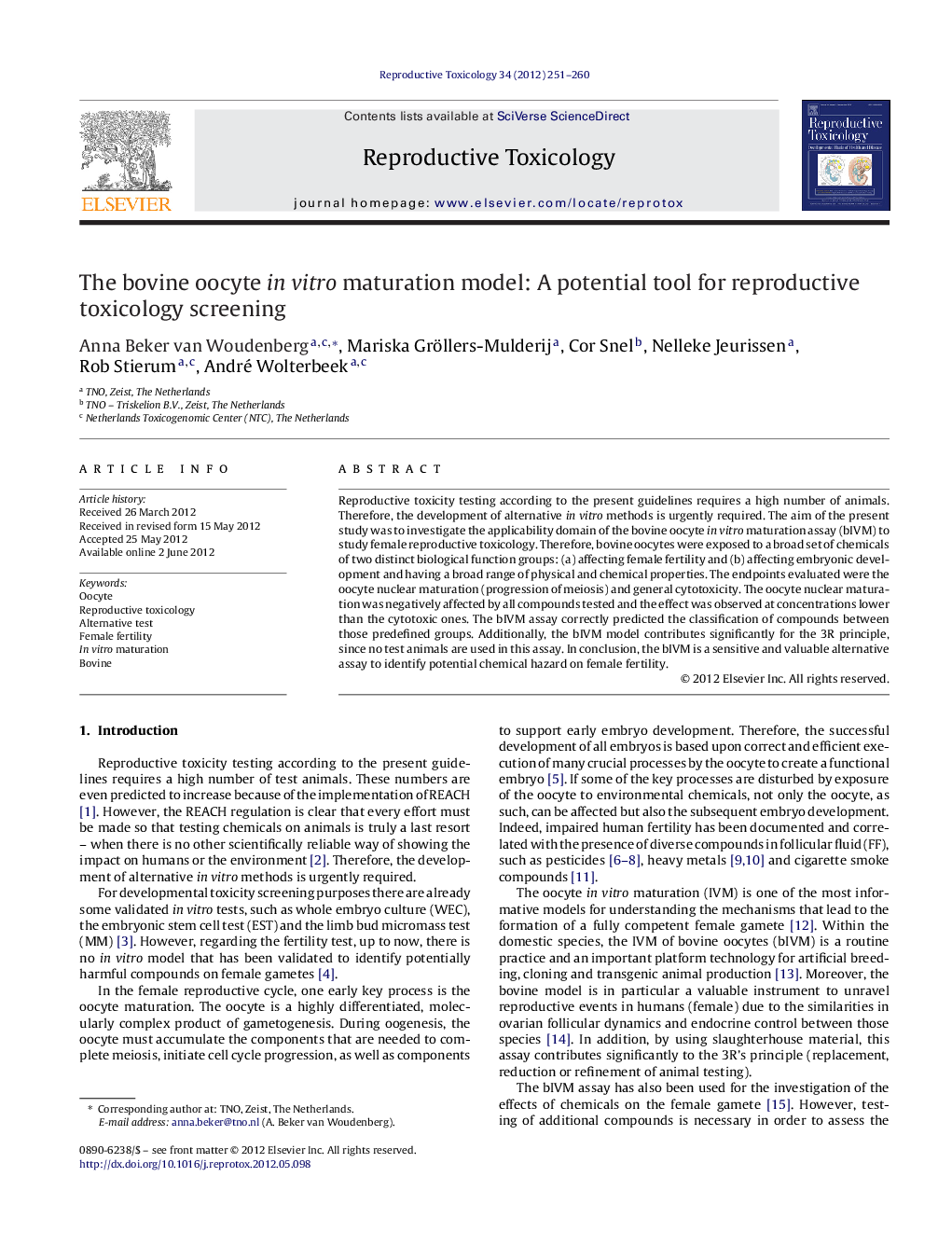| Article ID | Journal | Published Year | Pages | File Type |
|---|---|---|---|---|
| 2593992 | Reproductive Toxicology | 2012 | 10 Pages |
Reproductive toxicity testing according to the present guidelines requires a high number of animals. Therefore, the development of alternative in vitro methods is urgently required. The aim of the present study was to investigate the applicability domain of the bovine oocyte in vitro maturation assay (bIVM) to study female reproductive toxicology. Therefore, bovine oocytes were exposed to a broad set of chemicals of two distinct biological function groups: (a) affecting female fertility and (b) affecting embryonic development and having a broad range of physical and chemical properties. The endpoints evaluated were the oocyte nuclear maturation (progression of meiosis) and general cytotoxicity. The oocyte nuclear maturation was negatively affected by all compounds tested and the effect was observed at concentrations lower than the cytotoxic ones. The bIVM assay correctly predicted the classification of compounds between those predefined groups. Additionally, the bIVM model contributes significantly for the 3R principle, since no test animals are used in this assay. In conclusion, the bIVM is a sensitive and valuable alternative assay to identify potential chemical hazard on female fertility.
► The applicability domain of the bovine oocyte in vitro maturation assay was studied. ► Oocytes were exposed to chemicals with distinct biological functions. ► All chemicals tested significantlyreduced the percentage of mature oocytes. ► The bIVM correctly predicted the classification of compounds tested. ► The bIVM is a valuable alternative assay to identify potential effects on fertility.
